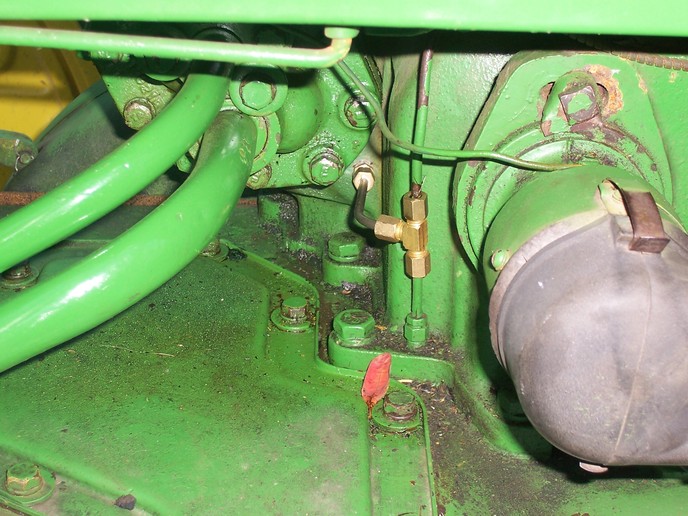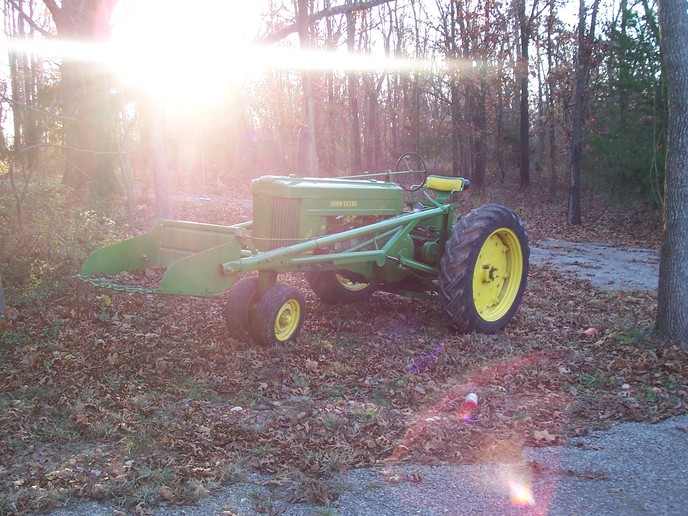Fred from MO
Member
Thanks to the help from the folks on this board I have completed my mod to the ol 60. After burning up the bushings on the idler gear that goes between the hydraulic pump and the governor housing (aparently a common problem due to the gear only recieving the splash lubrication carried up by the gears) I added a direct shot of oil by drilling and tapping into the end of the governor housing where the idler shaft resides. The idler shaft is hollow and has a hole in the end toward the middle of the tractor. I had to remove the flywheel, hydraulic pump and the sucktion and pressure lines to the pump to remove the burned up gear/shaft. The shaft was gaulded bad and would only come out of the housing 3/4 of the way before it got stuck. So I stuffed a bunch of rags in the governor housing to catch the thrust washers off the gear and tapped up the opening where the hydraulic pump sat and used a grinder to grind the shaft off. Then I pushed the stub part of the shaft into the governor housing and then removed the shaft and gear, but somehow managed to drop one thrust washer down into the engine. So Then I had to remove the engine cover and fish it out with a flex magnet. To drill I drilled from the flywheel side through the governor housing using a Q size dril again with rags stuffed in there to pick up any shavings from drilling. I then tapped from the outside of the governor housing using a 1/8 taper pipe tap. I then cut into the 3/8 steel line that comes up from the engine and goes to the oil pressure gage on the dash, and the auto fuel shut off. I used a 1/4 compression T and compression fittings along with a 12" 3/8 steel brake line from an auto parts store. You could get by with a shorter piece of brake line but this is all my store had. While the pump was off I replaced the seal between the pump shaft and the pump engagement gear and all the other o-rings and gaskets that were really old for good measure. Everything works good and hopefully this modification will help the idler gear/bushing and shaft from ever having lack of lube problems. I did notice a drop in pressure at the oil pressure gage from T'ing off of it. I may increase the oil pressure some day just a little to make myself feel better. I have a slight leak of hydraulic oil around the hydraulic pump bolts for some reason. These bolts are not copper washer sealed. They just used lock washers. I did use permatex on the pump halfs on re-assembly. Hope this helps anyone who runs into this problem in the future. Thanks for the advice!





